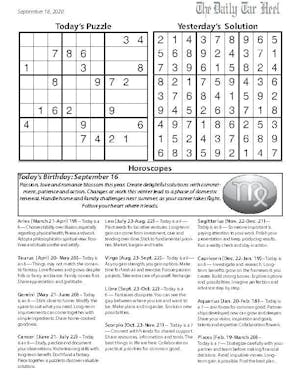Master of Fine Arts student Antoine Williams gathers his artistic inspiration from his experience growing up in Red Springs dealing with issues of race and class. His exhibit at the John and June Allcott Gallery in the Hanes Art Center, which is a part of a nine-week MFA exhibition series, displays human-animal hybrid illustrations that represent the obstacle preventing swift class mobility. Through his oversized prints and 3-D structures, he hopes to encourage the gallery’s visitors to stop and take a moment to reconsider what they see.
Staff writer Ally Levine spoke with Williams about society’s rigid class structure and the reflection of this concept in his work.
The Daily Tar Heel: Can you describe your artistic background?
Antoine Williams: I was born and raised in North Carolina. I went to UNC-Charlotte for undergrad and majored in illustration. After I got out, I stayed in Charlotte. Me and these other guys who recently got out — three black guys — started an art collective. Through that, we did a bunch of community-type art projects. We did murals and afterschool programs. From there, I got more and more into painting as far as murals and that sort. But we were heavily into comic books, video game art, graffiti and stuff. But, I got more and more into painting, so from there, I decided to come here to UNC-Chapel Hill.
DTH: What should people expect to see in your exhibit this week?
AW: I’m right now working with collage, working with painting, working with wheat paste, but overall working with using illustrator methods to create these creatures, hybrid-like human-animal deities. That’s my focus now: creating a mythology of the psychology that causes people to behave in certain ways. It is very specific to where I grew up — in Red Springs, North Carolina. As far as the medium, it’s a number of different things, but conceptually it’s a focus on race and class.
DTH: Why is it entitled “Something in the Way of Things”?
AW: The title is based off of a poem by the poet Amiri Baracka. He just passed away. In the poem he talks about a guy who lives in the hood, in the ghetto, and can’t make his way out. He doesn’t know why. There’s something that’s keeping him from escaping. My work is similar to that in that I created this mythology, these deities, they are the gods of dysfunction who exist between class and race. They are the “somethings” that keep us where we are in the social order. There is an ambiguous space, and they are those ambiguous creatures that exist in those spaces.
DTH: What do you hope people will take away from the exhibit?
AW: I guess when I make this work, I think about signs, I think about how people read black image — blackness. I try to disrupt that image formally in my work and try to get people to slowdown and get another look at what they’re seeing. I don’t really try to dictate what people take away from my work because everyone brings something different to it. So, I do very little in trying to dictate that, but if anything it would be having them slow down and look at the work.
arts@dailytarheel.com
To get the day's news and headlines in your inbox each morning, sign up for our email newsletters.




